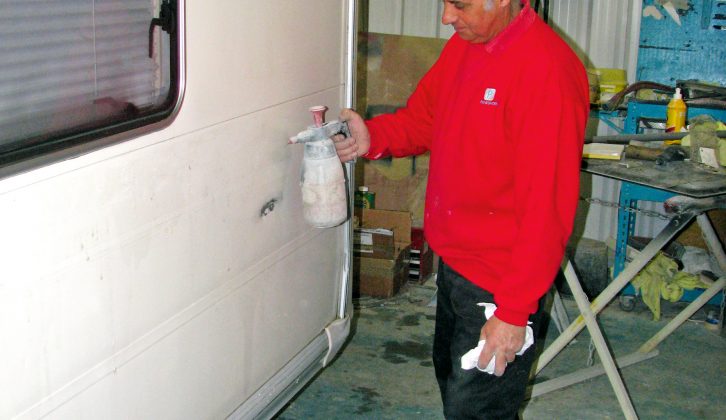Introduction
The caravan, often seen as a symbol of freedom and adventure, is also a significant investment for many. Ensuring its longevity and functionality is paramount for caravan enthusiasts. A crack in a caravan panel, whether on the exterior or interior, is not just an aesthetic concern. If left unattended, it can lead to more severe issues, compromising the structural integrity of the caravan and potentially leading to water ingress, dampness, and other related problems. Addressing such issues promptly ensures that the caravan remains safe, functional, and retains its value.
Causes of Cracks in Caravan Panels
Caravans, with their intricate designs and varied materials, are susceptible to wear and tear. The materials used in their construction, such as aluminium panels, fibreglass or GRP, and Acrylic ABS, each have their unique properties and vulnerabilities. Aluminium panels, for instance, interlock to create a robust structure, but they can still be prone to fatigue cracks over time. GRP and fibreglass, while offering structural reinforcement, can also be damaged if subjected to significant external forces. Common scenarios leading to such damages include maneuvering in tight spaces, accidental collisions, or even manufacturing stresses that manifest over time.
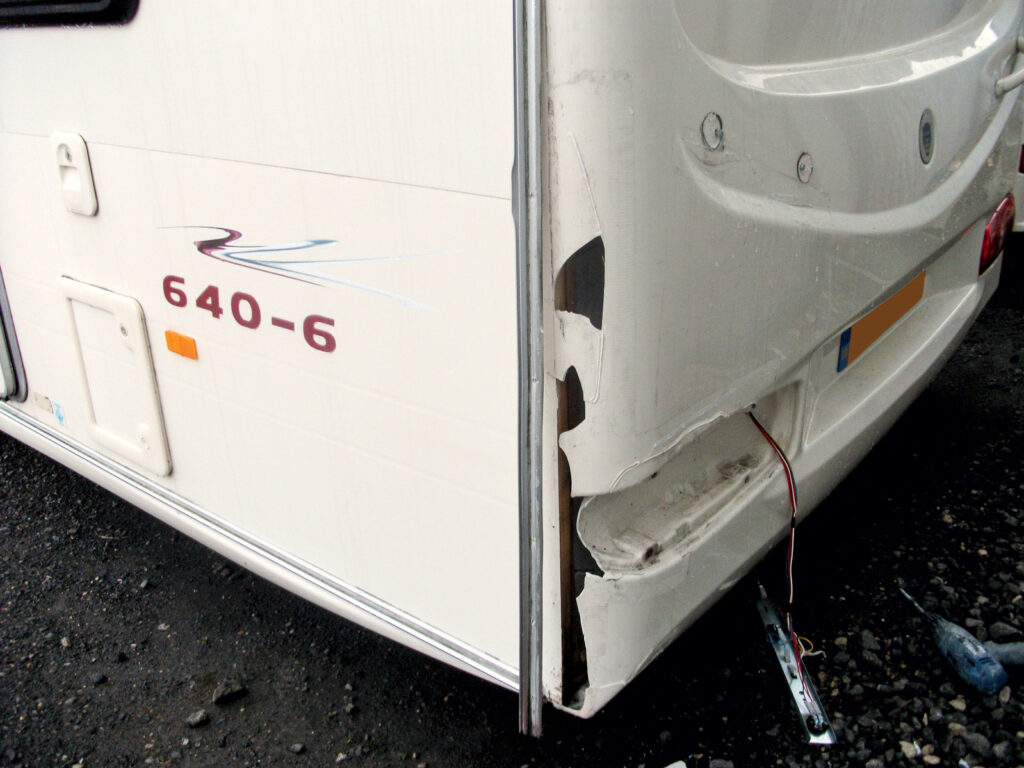
Immediate Steps After Noticing a Crack
Discovering a crack in your caravan panel can be distressing, but immediate action can mitigate further complications. The first step is to document the damage meticulously. Taking clear, high-resolution photographs from various angles can provide a comprehensive view of the extent of the damage. These images are not only crucial for personal records but are invaluable when liaising with insurance companies. Registering a claim promptly ensures that the repair process commences without delay. In the interim, temporary measures like applying duct tape can be employed to prevent water ingress and further deterioration.
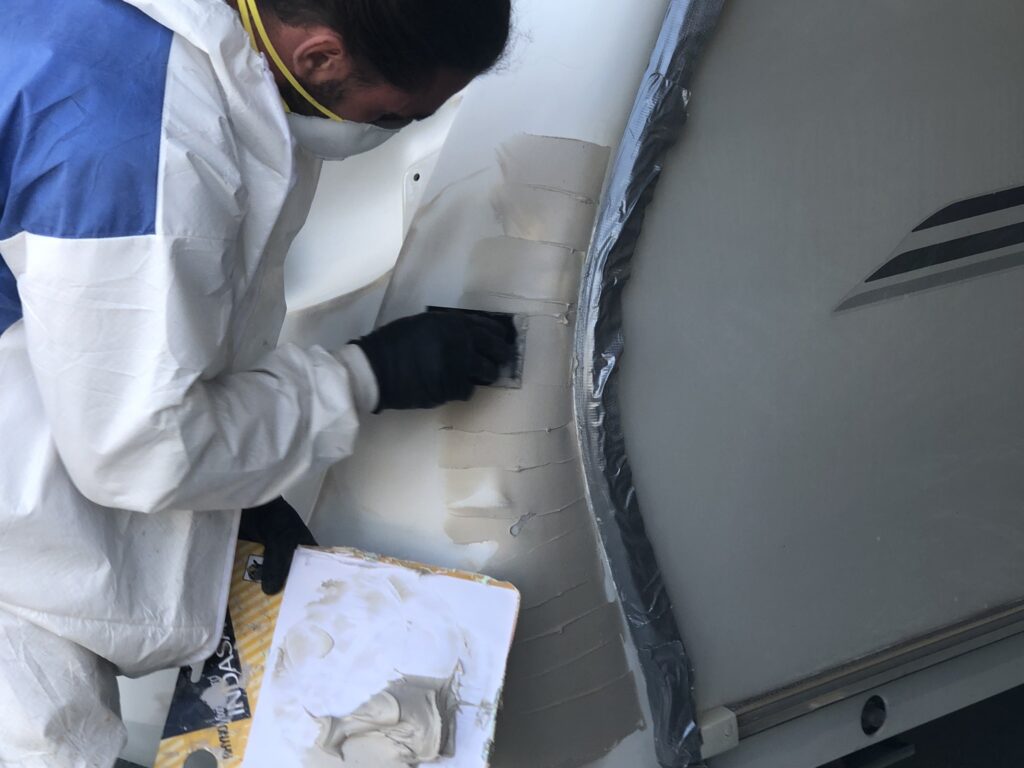
Can You Repair Caravan Panels?
The feasibility of repairing a cracked caravan panel largely depends on the nature of the damage and the material of the panel. While minor cracks might be amendable to DIY solutions or professional repairs, significant damages might necessitate panel replacement. It’s imperative to consult with professionals who can assess the damage and provide guidance. They bring industry experience and can offer insights into the best course of action. Temporary fixes, like duct tape, might offer a short-term solution, but they are not a substitute for professional repairs, especially when considering the risks of moisture and dampness penetrating the caravan.
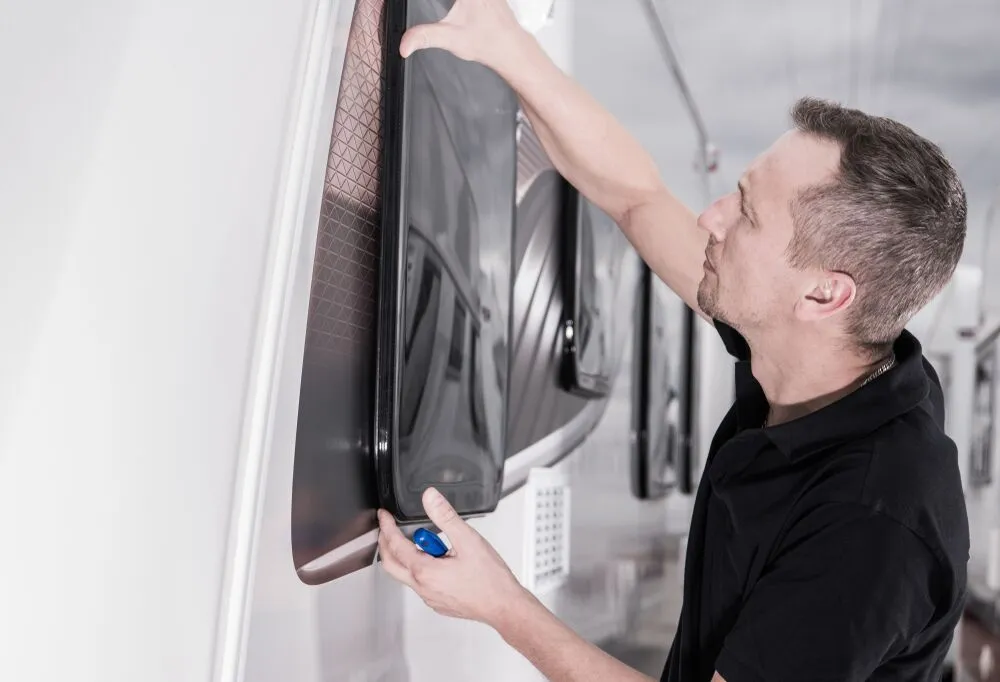
Repair Techniques Based on Material
Different caravan panel materials require varied repair techniques:
Aluminium Caravan Panels: These panels, while robust, can develop fatigue cracks, especially around vulnerable points like windows or doors. Such cracks, unfortunately, are often irreparable, necessitating panel replacement to prevent water leaks and further damage.
GRP or Fibreglass Caravan Panels: GRP panels can be mended using conventional car bodywork fillers. If the panel is of a thicker GRP material, the crack might only affect the top resin layer, leaving the body intact. Significant cracks require a comprehensive repair approach, addressing both the front and back of the panel to ensure a smooth finish.
Plastic and Acrylic Caravan Panels: Hairline cracks in these panels often indicate stress or undue force during the vehicle’s assembly. While epoxy resin can address minor cracks, significant damages might require professional plastic welding or even panel replacement.
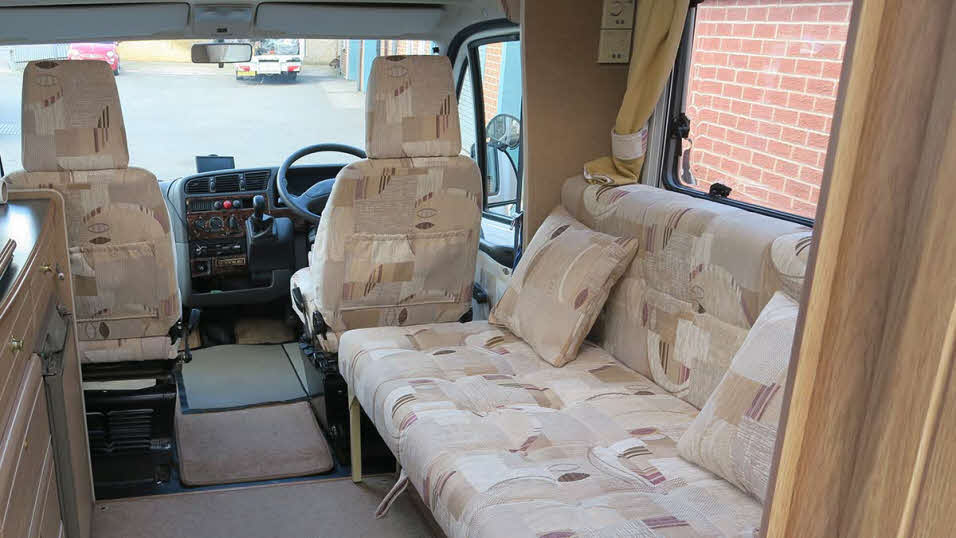
Conclusion
The caravan, for many, is more than just a vehicle; it’s a home on wheels, a symbol of freedom, and a testament to the spirit of adventure. Ensuring its upkeep and addressing issues like cracked panels promptly is not just about maintaining its aesthetic appeal but also about ensuring safety, functionality, and longevity. While minor damages can often be repaired, significant cracks or damages might necessitate more extensive interventions, including panel replacements. It’s always advisable to consult professionals, weigh the costs against the benefits, and make informed decisions to keep the caravan in optimal condition.
Repair Techniques Based on Material (Continued)
Different materials used in caravan panels have their unique repair methodologies, and understanding these can be crucial for effective maintenance:
Repairing Aluminium Caravan Panels (Continued): Aluminium, known for its durability and lightweight properties, is commonly used in caravan panels. However, over time, fatigue cracks can emerge, especially around areas like doors and windows. These cracks can lead to water leaks, causing further internal damage. Unfortunately, once these fatigue cracks appear, they are challenging to repair effectively, making panel replacement often the most viable solution.
Repairing GRP or Fibreglass Caravan Panels (Continued): GRP, or Glass Reinforced Plastic, is another popular material for caravan panels due to its strength and flexibility. Minor cracks in GRP panels can be addressed using conventional fillers used in car bodywork. For more significant damages, especially in thicker GRP panels, a comprehensive approach is needed. The damaged area might need to be accessed from both the front and back, filled, and then smoothened out to restore the panel’s original appearance.
Repairing Plastic and Acrylic Caravan Panels (Continued): Plastic and Acrylic panels, while durable, can show signs of stress in the form of hairline cracks. These cracks often indicate undue force or stress during the caravan’s assembly. For minor cracks, solutions like epoxy resin can be effective. However, larger cracks might require specialized techniques like plastic welding. In cases where the damage is extensive, panel replacement might be the best course of action. It’s essential to weigh the costs and benefits and consult professionals before deciding on the repair method.
